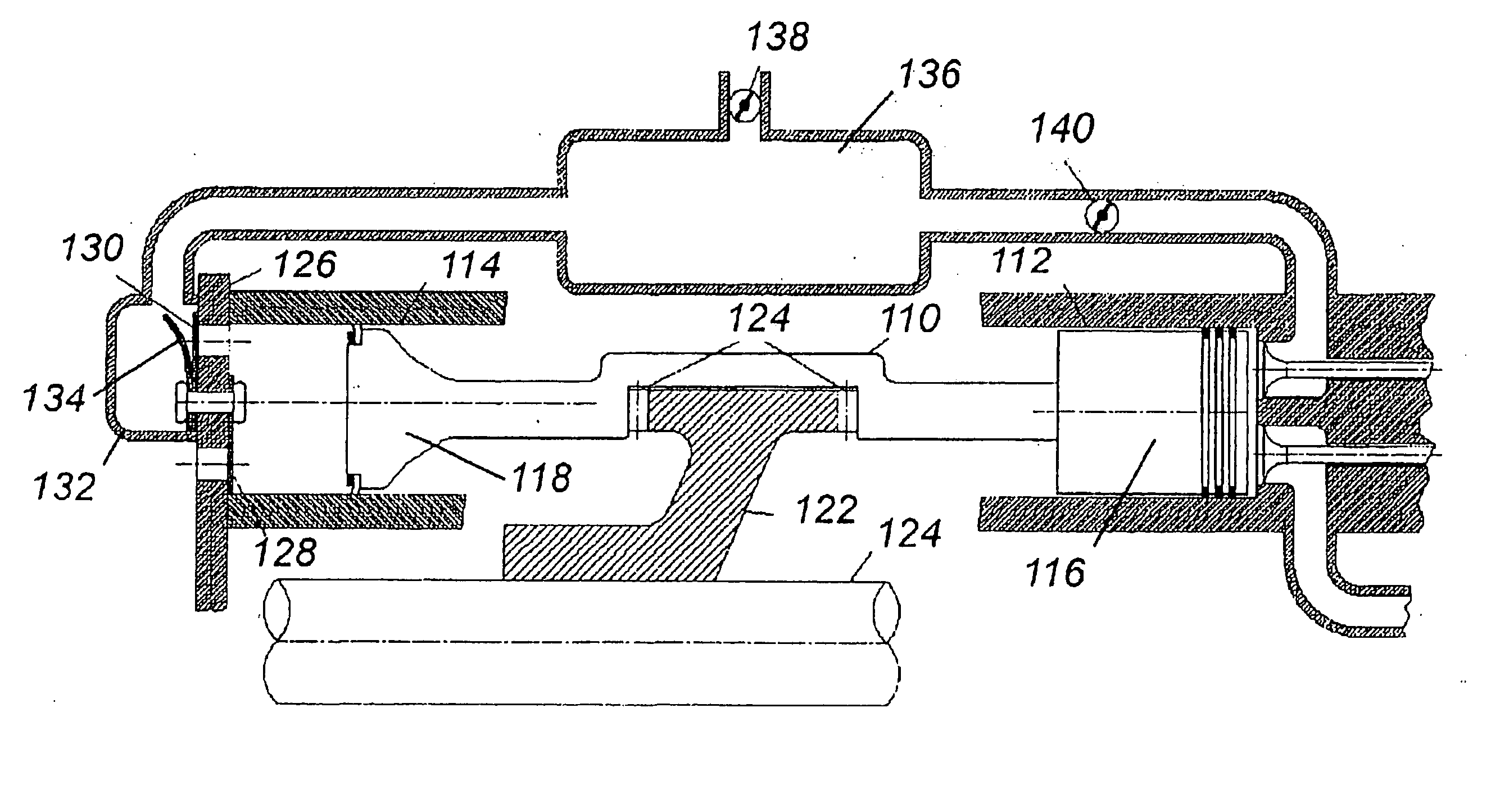Single-ended barrel engine with double-ended, double roller pistons
a single-barrel, double-rolling technology, applied in the direction of machines/engines, positive displacement liquid engines, mechanical equipment, etc., can solve the problems of lack of long-term durability, cumbersome and complex design of the pivoting head of the saab, and the ability of the variable compression ratio engine has not been used in commercial applications, so as to reduce the side load of the piston, optimize the ability of the piston motion, and simplify the variable compression ratio
- Summary
- Abstract
- Description
- Claims
- Application Information
AI Technical Summary
Benefits of technology
Problems solved by technology
Method used
Image
Examples
Embodiment Construction
[0027] A single-ended barrel engine design presents a unique opportunity to vary compression ratio by simple and inexpensive means, and to optimize piston motion. A single-ended barrel engine is one that contains only one central track for driving piston motion, with the combustion event occurring on only one side of the track and one end of the engine. This configuration is less complicated than opposing piston and double-ended barrel engine designs and provides an engine structure that allows the engine's compression ratio to be easily and simply varied by axially changing the position of the track. A single-ended barrel engine design also allows piston motion to be independently optimized for the intake, compression, combustion and exhaust cycles because power is produced on only one side of the track. FIG. 1 illustrates an example of a single-ended barrel engine.
[0028] The engine 10 in FIG. 1 is merely representative of the general configuration of an engine referred to herein ...
PUM
| Property | Measurement | Unit |
|---|---|---|
| compression ratio | aaaaa | aaaaa |
| constant distance | aaaaa | aaaaa |
| diameter | aaaaa | aaaaa |
Abstract
Description
Claims
Application Information
 Login to View More
Login to View More - R&D
- Intellectual Property
- Life Sciences
- Materials
- Tech Scout
- Unparalleled Data Quality
- Higher Quality Content
- 60% Fewer Hallucinations
Browse by: Latest US Patents, China's latest patents, Technical Efficacy Thesaurus, Application Domain, Technology Topic, Popular Technical Reports.
© 2025 PatSnap. All rights reserved.Legal|Privacy policy|Modern Slavery Act Transparency Statement|Sitemap|About US| Contact US: help@patsnap.com



